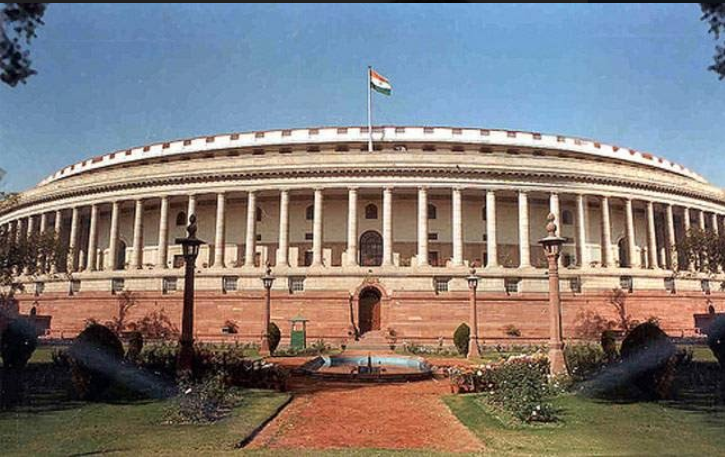
An investment in knowledge pays the best interest. Investors however, while conversant, are not necessarily consummate, in their knowledge of the law. They therefore seek to attain an understanding of their assets and whether the rule of law of a country will help them preserve those assets and aid them in pursuit of a claim. They prioritise the expenditure of time and money involved in order to realise the claim. Perhaps most importantly, investors seek to understand whether there exists a clear and consistent application of the law in said country. This being a somewhat herculean task, investors would prefer resorting to the assessment of a trusted authority, notably the World Bank Group and their Doing Business study, which attempts to show the areas in which developing economies are catching up in the ease of doing business.
It is in this regard and with the intent to prioritise economic reform and to improve the image of the country as a preferable destination for investment, that the Commercial Courts, Commercial Division and Commercial Appellate Division of High Courts Act, 2015 was passed. The act placed within its jurisdiction, a wide variety of disputes, including ordinary transactions of merchants, bankers, financers and traders, to exploitation of oil and natural gas reserves and electromagnetic spectrums. These matters were brought under the umbrella of what constitutes a ‘Commercial Dispute’.


The essential features of the Act contemplated the establishment of Commercial Courts at the District level and in states where the High Courts have Original Jurisdiction, the establishment of a Commercial Division at the High Court. To entertain appeals, the Act sought the establishment of the Commercial Appellate Division in High Courts. The pecuniary jurisdiction of commercial courts and commercial divisions was set at Rs. 1 Crore. The aim appeared to be the disposal of high value commercial disputes in an expeditious manner.
The Act further directed that commercial disputes be heard in a summary manner wherein the court may pass judgement on the claim (or part of the claim), dismiss the application or dismiss the claim (or part of the claim). If such summary procedure was unsuccessful, the Act contemplated a system of Case Management Hearing- setting a fixed timeline for every subsequent stage of the matter, from filing of affidavits to presentation of final arguments. The intent being time bound proceedings with limited extensions granted in the event of delay. The Act also created a novel provision for collection and disclosure of statistical data pertaining to the number of suits filed, stages of pendency and rate of disposal, to be provided monthly.
Thereafter, in 2018, the Government, in an attempt to improve any perceived lacunae in the Act of 2015, sought a series of amendments, the most pertinent of which stated the reduction of pecuniary jurisdiction from Rs. 1 Crore to Rs 3 Lacs. It also included the creation of Commercial Appellate Courts at the District level. In areas where the High Courts have Original Jurisdiction, the state Government, in consultation with the High Courts, may specify the jurisdiction of the commercial Courts, provided it not be below Rs. 3 Lacs. The amendment also mandated Pre- Institution Mediation and Settlement Talks, and of changing the name to the more easily digestible, Commercial Courts Act.
The Minister of Law and Justice, in 2018, while speaking on the proposed amendments before Parliament, once again placed reliance on the Ease of Doing Business ranking criteria of the World Bank stating, with not undeserved enthusiasm, that since the time this Government had been in power, India’s ranking had jumped from 142nd in the list of 190 countries to 100th.
In 2020, it may be proclaimed with some satisfaction that India stands at the 63rd position in the aforementioned ranking. While this achievement is not insignificant, it is debatable as to whether it can be attributed to the performance and/or the impact of the Commercial Courts Act. Even a cursory glance at the Word Bank Group’s Doing Business Index reveals that India’s ranking is attributable to reforms in Starting Businesses, Dealing with construction Permits, Trading Across Borders and Resolving Insolvency, all of which fall within the purview of other executive, judicial and quasi-judicial jurisdictions. It is to be noted however, that there is a conspicuous absence of reforms in ‘enforcing contracts’, a fact which has been observed by the World Bank Group. The expeditious enforcement of commercial contracts, the very bedrock of the Commercial Courts Act, has been seen to be absent.
The number of Judges, infrastructure, man power, pending cases, all must be taken into consideration before moving enactments touting the introduction of time bound and expeditious trials. Effective implementation necessitates consultation and planning with the Judiciary.
A study published in the Bloomberg Quint, by Vaidehi Misra and Ameen Jauhar, in 2019 revealed that, despite the mandate on High Courts to publish monthly statistical data on their respective websites, it was only the High Court of Delhi which appeared to be maintaining data and making regular disclosures. It was further observed in the study that the capacity issue remains unaddressed as, when the pecuniary requirement was above Rs. 1 Crore, the monthly influx of new commercial disputes in Delhi and Bombay averaged between 252 and 206 cases, while disposal rates remained sub-par, thereby theorising that either judicial performance and or shortage of judges might be the cause.
While the Act makes mention of constituting commercial Courts, in practice it seems to mean the mere designation of existing Courts as commercial Courts. It does not seek the creation of new Courts with new Judges, but rather to enhance the already considerable burden placed on the able and determined shoulders of the Judiciary. It seeks to further place upon it, the obligation to give commercial disputes priority, without consideration for the other matters present and pending before the Courts, many of which have been languishing for decades. The hearing of commercial disputes are mere additions to the existing rosters of Judges, nothing more.
To allow the enactment to bring about a constructive change, the strength of the Bench must be increased in order to allow the Judiciary to deal effectively with the increased workload. Only then will the Courts be able to give cases and counsel the most of their time and, more importantly, their attention. Courts deal with anywhere between 50 to 150 matters a day and cannot provide future dates within a short period, let alone guarantee an effective hearing. Every Judge hears an average of 70 matters a day, after which another 70 briefs must be read for the next morning. This is in addition to the judgments they are expected to find the time to write.
While the enactment can indeed be seen as a wellintentioned legislation visà-vis economic reform, if it has any real intention of succeeding, it must first address the pressing issue of allocation of resources, both monetary and human, to enable the creation of additional and well equipped Courts. Enacting legislation without consideration of its impact on Judicial resources and without creating proportionate Judicial infrastructure is what ultimately results in the clogging of the Judicial machine. This leads to delays, which hampers efficiency. This in turn, leads to additional expense on the part of the litigant, which leads to criticism and external pressure. These are a few factors which lead, in some cases, to hasty and imperfectly reasoned decisions, lending an unflattering colour to the Judicial system in the eyes of the layman. All of this culminates in the investor being terrified of entering the Indian market. The most frequent traumatism experienced by a new litigant in India, is the revelation of how long a matter can go on before it reaches its conclusion. As a result, addressing and preparing a client with regard to the stamina required, both emotionally and financially, to wage an effective litigation, has become common practice for advocates.
In addition to infrastructure, the Courts require trained manpower to effectively assist Judges. Stenographers must be present in all Courts along with staff trained in short hand, so that submissions and arguments may be recorded in real time, thereby limiting the need for counsel to reiterate previously extended submissions and eliminating the likelihood of complex and intricate submissions being mis-interpreted or missed out completely. Further, this has the potential to greatly increase the speed of recording evidence as it can eliminate the current 4 step method, where the advocate asks the witness a question, the Court dictates the question to the typist, the witness answers and the Court dictates the answer to the typist, that is, unless there is an objection which leads to an entire new set of difficulties.
Regarding the methodology in place for the recording of evidence, Dr. Abhinav Chandrachud, in his Bloomberg Quint Opinion, astutely pointed out the improbability of adhering to the timelines set out in the Act, which direct oral evidence to be recorded on a day to day basis and final arguments to be heard no later than six months from the first Case Management Hearing. He places reliance on the statistics published by the Supreme Court in 2017, which reveal a pendency of 5,358 original civil suits before the High Court of Bombay with only 2 to 3 Judges assigned to such cases. No amount of resourcefulness can overcome a lack of resources such as they are, in the Indian Judiciary.
The methods of conducting admission and denial of documents is no less arduous, as Dr. Chandrachud has also pointed out, by going into detail on the marking of exhibits, testimony of a witness regarding the contents on an electronic device and so on, stating that in commercial matters, which may involve hundreds of documents, many hours are spent on marking the documents, while their probative value still remains open for the Court to determine.
Further, roster allocation ought to be decided based upon the experience of the concerned Judge in that area of law, in order to create a system whereby the Court does not have to spend time familiarising itself with an area of law alien to it. This has the potential to enhance the speed at which the Court can hear the cases before it and is also likely to discourage misleading submissions where an obligation to the client circumvents the obligation to the Court.
Another potential factor for greater efficiency, may be the long overdue decision of increasing the retirement age of Judges by at least 10 years. Such a measure, along with the aforementioned improvements, aids in compelling highly experienced counsel, who might have been reticent to do so at a younger age, to join the Judiciary. Such counsel have made their bones and earned their riches. Their acumen has earned the regard of their peers and superiors and they are at this stage, beholden to no one.
If the considerations prevalent in the creation of an enactment are divorced from the practical realities of a situation, it results in the stifling of effective implementation and cannot therefore bring about any worthy improvement. An enactment which claims to exist for the purposes of projecting to the world, or more specifically, investors, a competent and effective legal/judicial system has little to no value in and of itself, especially if it results in overburdening an already scarce and over encumbered resource. It is then less an Act of Parliament and more an Act of appeasement and might result in more harm than good, unless more fundamental and systemic problems are addressed.
While political intent may be spelt out by the leadership at the highest level, it is the responsibility of the executive to translate it into effective and meaningful action on the ground, by incorporating the necessary legislative and administrative changes required. This is best achieved by an examination of the problems in the existing state of affairs. Any attempt at mere lip service through the attempted appeasement of a target audience, is often manifested in a palpable lack of progress or extremely limited gains, as in the present case. It has been the opinion of many in this profession that we are yet to see the real influx of commercial disputes, and the ability of our institutions to effectively address them, as many more shall arise due to the current state of the world. The complete reopening of the Courts might well be seen as floodgates drowning an institution already struggling to keep itself afloat in spite of its heavy burden. Time will tell.
Adv. Meghna Mishra is Partner, Karanjawala & Co., Adv. Yogendra Misra practises Civil Commercial litigation at Delhi High Court.















